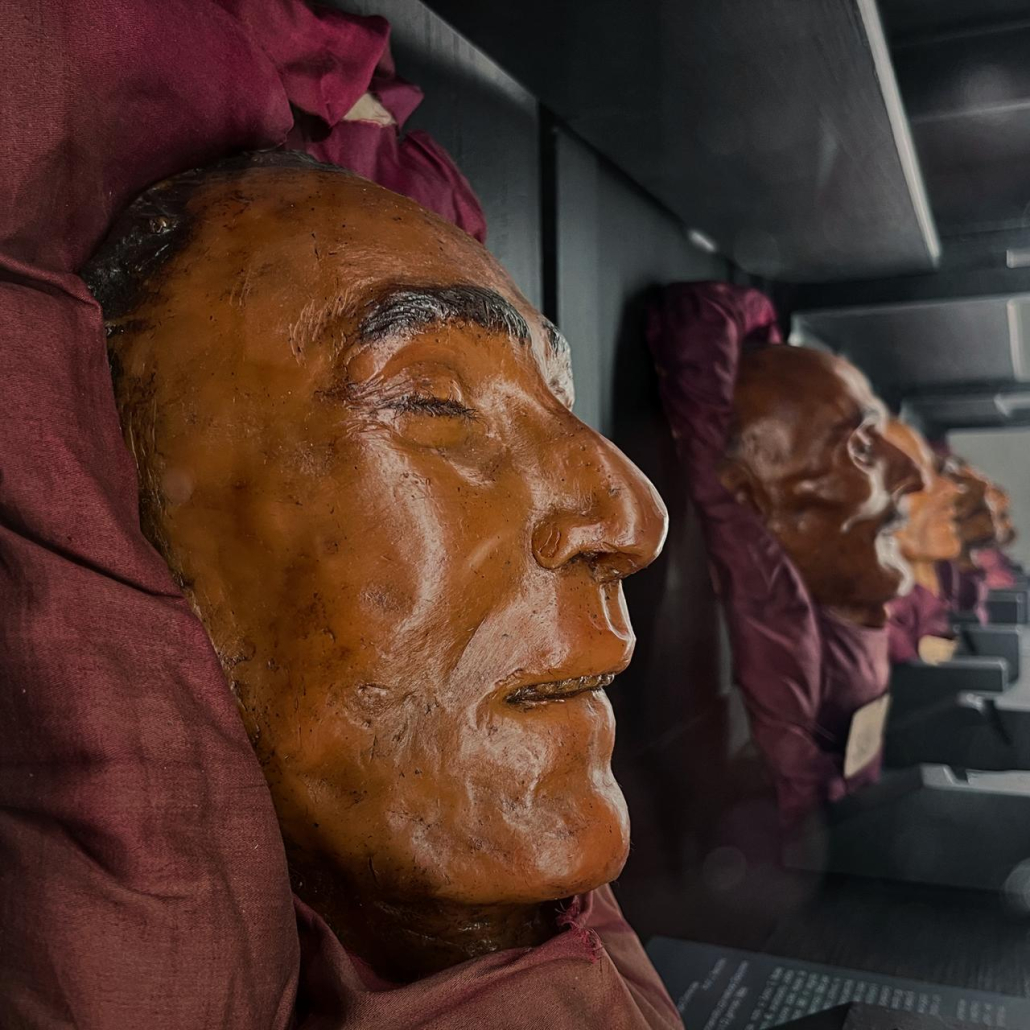2. The masks section by Lorenzo Tenchini
Lorenzo Tenchini’s masks represent a unique example of nineteenth-century scientific and anatomical research. Created at the end of the 19th century by Lorenzo Tenchini, a professor of anatomy in Parma and student of Cesare Lombroso, these wax masks reproducing the faces of criminals combine scientific investigation with a technique that was extraordinarily innovative for its time.
The masks were designed to “catalogue” the facial expressions and structures of the subjects whose brains Tenchini was studying, with the aim of identifying possible morphological abnormalities in the brain associated with deviant, dystonic and socially dangerous behaviour. This approach was part of the criminal anthropology of the time, a discipline that sought to establish relationships between physical characteristics and behavioural and functional traits, with a particular focus on criminal behaviour.
The collection comprises 78 masks, 48 of which are kept in Parma and 30 on display at the Lombroso Museum in Turin. A distinctive feature is that each mask is associated with a corresponding skull, brain and “dry” anatomical specimen. Each mask also comes with a handwritten card detailing the subject’s personal and criminal history.



